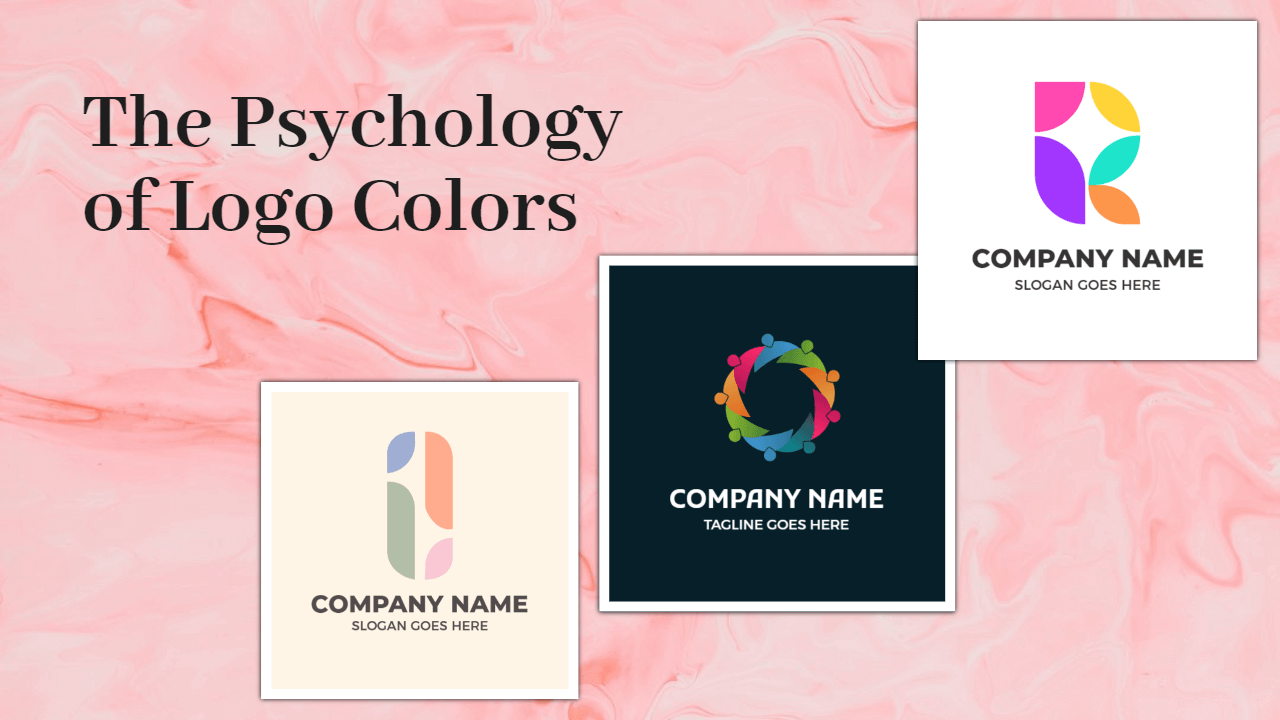In the ever-evolving world of marketing and branding, the significance of a well-crafted logo cannot be overstated. Beyond aesthetics, the colors within a logo play a profound role in shaping the emotional connections between a brand and its audience. This article delves into the psychology of logo colors, exploring the emotional nuances associated with each hue and how businesses can strategically leverage this knowledge.
Understanding the Significance of Colors
Before we dive into specific colors, it’s crucial to grasp the broader significance of colors in branding. Colors have the power to evoke emotions, convey messages, and create lasting impressions. A well-chosen color palette in custom logo design can influence consumer perceptions, establish brand identity, and foster brand loyalty.
The Subtle Power of Red
Red, often associated with passion and intensity, holds a unique place in the world of logo colors. It not only grabs attention but also symbolizes energy and action. Brands like Coca-Cola and Red Bull strategically use red to evoke excitement and enthusiasm, leaving a lasting impact on consumers.
Blue – Beyond the Sky: Trust and Dependability
Blue, the color of the sky and the ocean, represents trust, dependability, and calmness. Many tech giants, including IBM and Dell, incorporate blue into their logos to instill a sense of security and professionalism. Blue’s tranquil nature communicates stability, making it a popular choice for brands seeking reliability.
Yellow – A Ray of Positivity: Optimism and Clarity
Yellow, the color of sunshine, radiates positivity and clarity. Brands like McDonald’s leverage yellow to convey a cheerful and friendly image. Yellow captures attention, making it an excellent choice for brands aiming to stand out in a crowded market while projecting optimism and approachability.
Green – Nature’s Hue: Growth and Health
Green, abundant in nature, is synonymous with growth, health, and sustainability. Companies like Whole Foods use green to highlight their commitment to wellness and eco-friendliness. Green’s association with nature fosters a sense of balance and harmony, resonating well with environmentally conscious consumers.
Purple – The Color of Royalty: Elegance and Luxury
Purple, historically associated with royalty and luxury, exudes sophistication. Brands like Cadbury and Hallmark incorporate purple into their logos to convey a sense of exclusivity and quality. Purple’s regal undertones make it a powerful choice for brands aiming to project elegance and premium offerings.
Orange – Vibrancy and Playfulness
Orange, a vibrant and energetic hue, symbolizes playfulness and enthusiasm. Brands like Fanta use orange to create a lively and engaging identity. Orange captures attention and radiates warmth, making it an ideal choice for brands seeking to convey a sense of energy and excitement.
Black – Timeless Elegance and Authority
Black, a timeless and versatile color, signifies elegance, authority, and sophistication. Luxury brands like Chanel and Mercedes-Benz often incorporate black into their logos to project a sense of exclusivity and enduring style. Black’s simplicity and neutrality allow it to complement a wide range of brand identities.
White – Purity and Simplicity
White, often associated with purity and simplicity, has a clean and minimalist appeal. Brands like Apple and Adidas use white to convey a sense of modernity and sophistication. White’s neutrality allows other elements of the logo to stand out, making it an excellent choice for brands seeking a timeless and minimalist look.
Brown – Earthy Stability and Reliability
Brown, reminiscent of earthy tones, is associated with stability and reliability. UPS, with its iconic brown logo, aims to convey a sense of trustworthiness and dependability. Brown’s down-to-earth nature makes it suitable for brands looking to establish a grounded and reliable image.
Pink – Beyond Femininity: Compassion and Caring
Pink, often linked to femininity, also conveys compassion and caring. Breast cancer awareness campaigns and brands like Victoria’s Secret utilize pink to evoke a sense of care and empathy. Pink’s versatility allows it to communicate a wide range of emotions beyond gender-specific associations.
Factors to Consider When Choosing Logo Colors
Choosing the right color for your logo requires a strategic approach that aligns with your brand’s personality, target audience, and industry. Consider the following factors to make an informed decision.
Conducting In-depth Market Research
Understand your target market, competitors, and industry trends. Analyze the color choices of successful brands in your niche to identify patterns and gaps.
Understanding Color Psychology
Delve into the psychological impact of colors. Consider the emotions and associations each color evokes and how they align with your brand’s message.
Target Audience and Industry Alignment
Consider your target audience’s preferences and the expectations within your industry. Aligning your color choices with these factors enhances relatability.
The Impact of Cultural Nuances
Colors can have different meanings in various cultures. Ensure that your chosen colors resonate positively across diverse cultural backgrounds, especially if your brand has a global presence.
Strategies for Choosing the Right Logo Color
Armed with a comprehensive understanding of color psychology and the factors influencing logo color choices, implement the following strategies to choose the right color for your brand.
Real-world Case Studies of Successful Color Choices
Explore real-world examples of brands that have effectively harnessed the psychology of logo colors to build strong emotional connections with their audiences.
Conclusion
In the ever-evolving landscape of branding, the psychology of logo colors emerges as a strategic tool for businesses. By carefully selecting colors that align with the brand’s identity and resonate with the target audience, companies can create a visual language that speaks volumes about who they are and what they represent.
FAQs
Can changing my logo color boost brand recognition?
Yes, a well-thought-out color change can enhance brand recognition by evoking specific emotions and making the brand more memorable.
Are there industry-specific guidelines for logo colors?
While some industries have traditional color associations, it’s essential to focus on your brand’s unique personality and target audience.
Should I consider cultural differences when choosing logo colors?
Absolutely. Colors can have different meanings in various cultures, so it’s crucial to be aware of cultural nuances when expanding globally.
Can I use multiple colors in my logo?
Yes, using multiple colors can convey a sense of diversity and inclusivity, but it’s essential to ensure harmony and balance.
How often should I reevaluate my logo colors?
Reevaluating your logo colors may be necessary when rebranding or if there is a significant shift in your brand’s positioning or target audience.
Also read:
Bridgend Web Designer: Crafting Digital Excellence With Vision And Innovation





